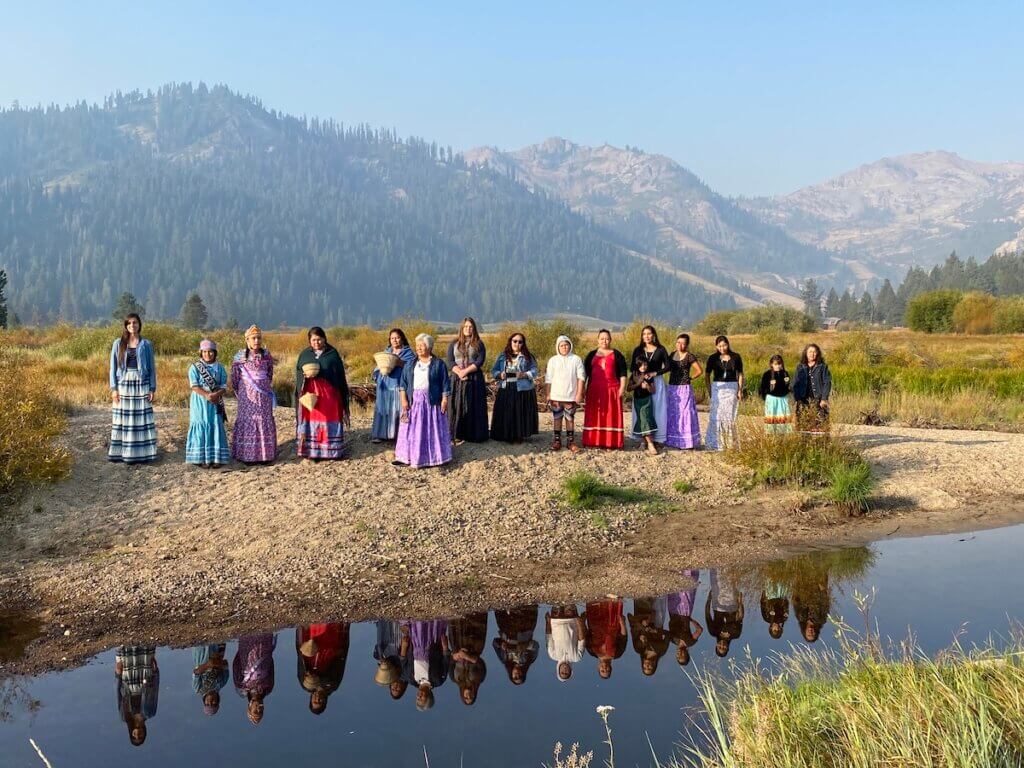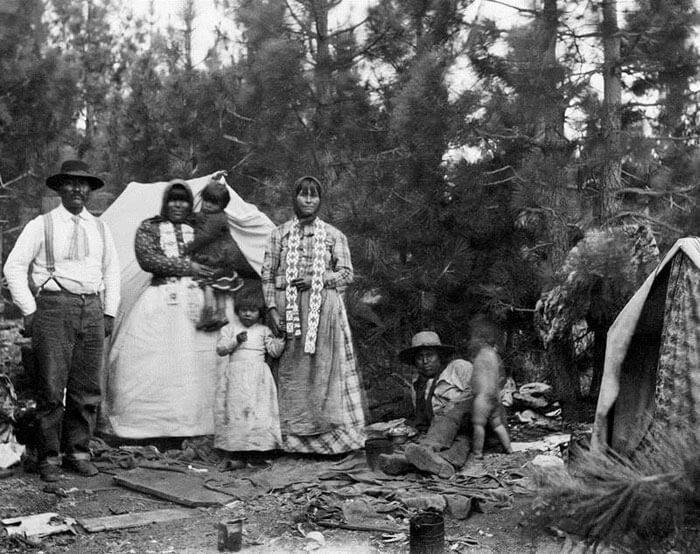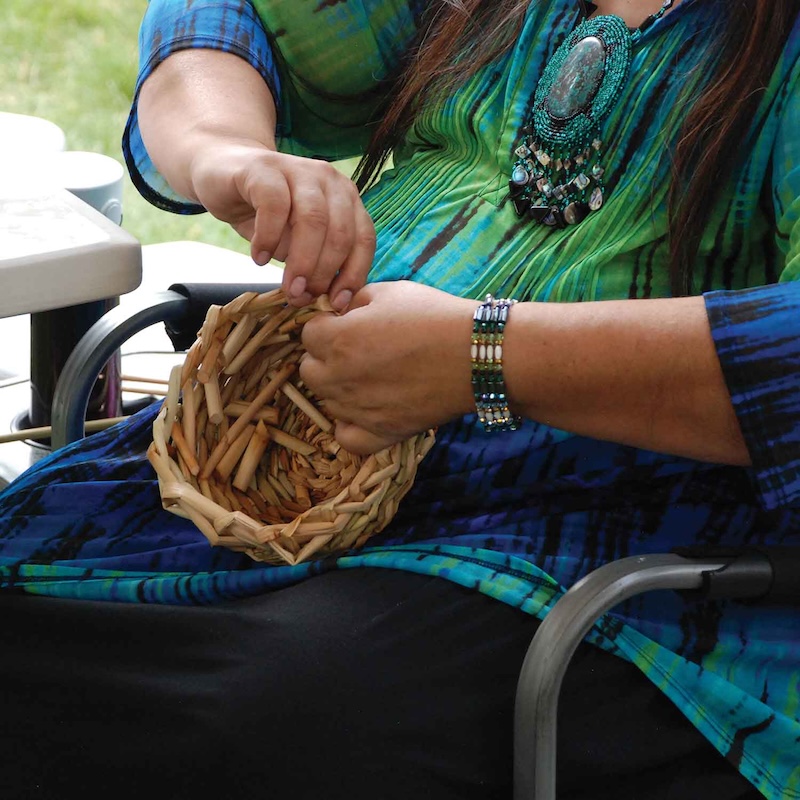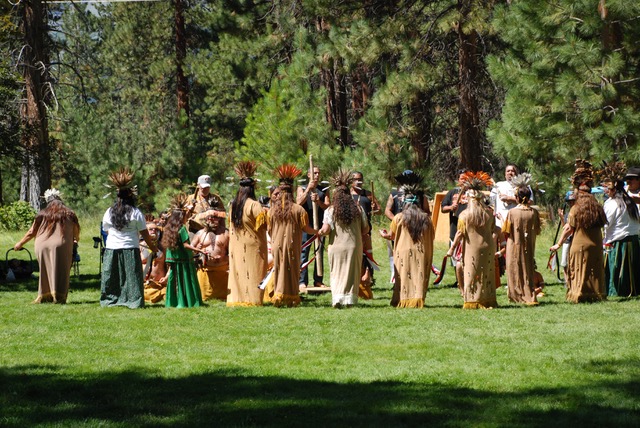The Washoe People and Their Deep Connection to Lake Tahoe
By: Ryn Muat
By: Ryn Muat

To the Washoe (Wašiw) Tribe of Nevada and California, Lake Tahoe isn’t just a beautiful destination, it’s the center of their world. Known in their language as dáɁaw (pronounced “dah-ow), Lake Tahoe and the lands that surround it have always been home. This is grounded in both their oral histories and cultural understanding of time, which is often described as cyclical.
Archaeological evidence supports at least a 12,000-year presence in the region. The Washoe people understand their origins through traditional stories passed down over generations, stories that speak of observing geological changes, like the formation of the Sierra landscape through geological events such as the seiche at Lake Tahoe and the appearance of new plants, such as the single-leaf pinyon pine.

The Washoe community was, and continues to be, built around family, though the definition of family extends well beyond a nuclear household. Households often included extended relatives and chosen family, and family units worked together in every aspect of daily life. Washoe communities reflect this interconnectedness to this day. Each person, from the youngest child to the most respected elder, played a vital role in the success and well-being of the group.
Winter camps were located in lower elevation valleys with abundant firewood, and families stayed warm through communal effort. As demonstrated by their use of snowshoes, Washoe People were experts at thriving within their homelands despite challenging seasonal conditions.
Traditionally, the Washoe were organized into three regional bands: welmélti (north), ṕáwalu (valley), and huŋalélti (south). A fourth, ťaŋlélti, represented Washoe people living farther west, extending even into what is now California’s Central Valley. While the language remained consistent across these groups, subtle variations in speaking patterns or word choice reflected regional identities.
Today, the Washoe Tribe of Nevada and California has approximately 1,500 enrolled members, with communities in Carson City, and Gardnerville, Nevada, as well as Woodfords, California, but there are no reservation lands within the Tahoe Basin due to the history of removal and exclusion. Each of these tribal communities retains strong cultural ties to Lake Tahoe.
The Washoe worldview is rooted in respect, for people, animals, waters, and the land itself. All things are alive and deserving of respect, autonomy, and reciprocity. Rather than dividing the sacred from the everyday, the Washoe recognize the interconnectedness of all things.
Every action was approached with intentionality. Even something such as washing with water in the morning is still important today. Before any gathering or hunting, individuals would wash themselves in water. When a child is born, the father washes off by jumping into a nearby body of water, and even a baby’s first bath is treated as a special event. Children are especially cherished, and the act of making a cradleboard — called a bíkɨs — is deeply meaningful. These baskets are made by matriarchs in the family or community and woven with intention, love, and positive thoughts. In this way, the basket carries with it all the well wishes and intention for the child it is meant to hold, carry and care for.

Language revitalization is a central focus of the Washoe Tribe today. While many Indigenous languages have been lost or fragmented due to historic government policies like the Indian Boarding School era, the Washoe language is still spoken by elders and taught to new generations.
Elders play a vital role not only as language carriers but also as cultural teachers. While some modern events may honor elders by serving them first today, children were often fed first or given the best to ensure they would be strong and healthy for the future, reflecting a cultural value that prioritizes the well-being of future generations and taking care of the most vulnerable.
Despite the impacts of colonization — including forced relocation, mining activity, the carving up of ancestral lands, and the trauma of boarding schools — the Washoe people have persevered.
While their presence within the Tahoe Basin has been diminished, it has never been erased. Many Washoe traditional practices were forced into hiding; however, the Washoe People have maintained a connection with their homelands and traditions.
Government policies restricted traditional practices such as spear fishing and land access, and the creation of private property boundaries blocked the Washoe from returning to family gathering areas. The Olympic Games, held in Lake Tahoe in 1960, took place while the Tribe was still waiting for the resolution of its Indian Claims Commission case, which wasn’t settled until 1968.
Still, the Washoe continue to advocate for land stewardship and cultural education. As a sovereign nation, the Washoe Tribe holds the inherent right to govern itself, creating its own laws, managing its lands, and carrying forward its traditions independent of state or federal authority.

The Washoe Tribe continues to celebrate its culture through events like the annual Waší∙šiw ɁitdéɁ Native American Basket and Arts Festival, held at the Meeks Bay Resort. This vibrant gathering features traditional arts, food, music, and dance, a public celebration and living affirmation of Washoe and Native American culture.
Waší∙šiw ɁitdéɁ Dates: July 26th and 27th, 2025 from 9am-5pm.
Those interested in learning more can visit:
This article was written in collaboration with the Washoe Tribe of Nevada and California Culture/Language Resources Department.
Lodging in Lake Tahoe